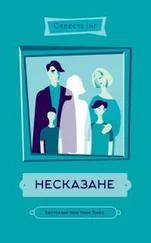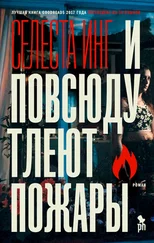Mia’s photograph had been last, and when the class gathered before it, Pauline had paused for a moment, as if taken aback. She had studied it carefully, for two minutes, three, five, and in the silence the class grew uneasy. “Who’s Mia Wright?” she asked finally, and Mia stepped forward. Everyone else took a half step back, as if whatever lightning were about to strike might hit them, too. Then Pauline began to ask questions. Why did you have this line run from right to left? Why did you shift the camera this way? Why did you focus on the hockey stick, and not the net? Mia answered as best she could: she had wanted to capture how small the house and the lawn were in comparison to the hills behind it; she had wanted to show the texture of the grass and the way the blades crushed under her brother’s shoes. But at a certain point, as Pauline’s questions became more technical, she had become flustered and inarticulate. The line had just looked right that way. The shift had just looked right that way. The depth of field had just looked right that way. At last, just as the class session ended, Pauline stepped away with a nod.
“Bring your cameras next time,” she said. “We’ll start to take some photos.” She picked up her bag and left the room, leaving Mia unsure if she’d just passed or failed utterly.
Over the next few classes Pauline treated Mia just like any other student. They learned to wind film into the camera, how to compose a photo, how to calculate the proper aperture and width. All of this Mia knew already, from Mr. Wilkinson’s tutelage and her own experimentations over the years. As Pauline explained it, however, her intuitive feelings about how to shape her shots became more conscious. She learned to articulate her reasons for choosing a specific f-stop, to not only find the settings that made it look right but to explain why it looked right that specific way. Two weeks into the semester, as the class began making their first prints, Pauline stopped by Mia’s station in the darkroom. In the glare of the red light she looked as if she had been carved from a giant ruby.
“How long have you been working with the view camera?” she asked, and when Mia told her, she said, “Would you like to show me some more of your photos?”
The following Saturday, Mia found herself in the lobby of Pauline’s apartment, an envelope of photos clutched in her hand. The building had a doorman, and Mia, having never encountered one before, was so awestruck she did not listen when he told her which floor, and resorted to pressing each button in the elevator in turn and checking the names on each door before ducking back inside and pressing the next. When she at last came out on the sixth floor, she found Pauline standing in the open doorway.
“There you are,” she said. “The doorman called up to say you were here ten minutes ago. I was starting to wonder.” She was barefoot but otherwise looked exactly the same as she did in class: a black T-shirt and a long black skirt and long beaded earrings that jingled like chimes as she walked. Mia, blushing, followed her into a large, white-walled, sunlit room where everything seemed to glow. She had expected a photographer’s apartment to be covered in photographs, but the walls were bare. Later she would learn that Pauline’s studio was upstairs, that she never hung anything because when she wasn’t working, she wanted the white space. Palate cleanser, Pauline would explain. But at this moment, Mia simply sat down beside her on the nubbly gray couch, where they laid photograph after photograph across the coffee table. Pauline was full of questions, as she had been that second day of class: Why did you set the camera so low in this one? Why so close in that one? Did you think about adjusting tilt here? What were you thinking about when you took this shot? In the photographs Mia lost her shyness. They were so engrossed that when a woman entered and set two cups of coffee down on the end table, one beside each of them, she jumped.
“Mal,” said Pauline, with an offhand wave. “Mal, this is Mia Wright, one of my students.”
Mal was slender with long, wavy brown hair. She wore jeans and a green blouse and, like Pauline, she was barefoot.
“Thought you’d like some coffee,” Mal said. “Lovely to meet you, Mia.” She kissed Pauline on the cheek and went away.
Mia spent all afternoon there, until it was time for her shift at the bar. Pauline and Mal pressed her to stay for dinner, until she finally admitted she had to go to work. “Then next week,” Pauline suggested, “when you have a day off.” Over the following months she would visit Pauline and Mal often, talking photography with Pauline, watching her at work in her studio, listening to Pauline think aloud about whatever she was working on at the time. “I’ve been reading about ancient Egypt,” Pauline might begin, flipping a book open. “Tell me what you think of this.” At their dinner table Mia tried foods she’d never tasted: artichokes, olives, Brie. Mal, she learned, was a poet, had published several collections of poems. “But no one cares about poetry,” Mal said with a rueful laugh. She lent Mia books by the stack: Elizabeth Bishop, Anne Sexton, Adrienne Rich.
By the time winter came, Mia would bring her newest photographs to show Pauline nearly every week, and they would talk them over, Pauline pressing her to articulate what she’d done and why. Before, Mia had taken photographs by feel, relying on instinct to tell her what was right and what was wrong. Pauline challenged her to be intentional, to plan her work, to make a statement in each photograph, no matter how straightforward the photo might seem. “Nothing is an accident,” Pauline would say, again and again. It was her favorite mantra, Mia had learned, in both photography and in real life. In Pauline and Mal’s house, nothing was simple. In her parents’ house, things had been good or bad, right or wrong, useful or wasteful. There had been nothing in between. Here, she found, everything had nuance; everything had an unrevealed side or unexplored depths. Everything was worth looking at more closely.
After these sessions, Pauline and Mal would always press Mia to stay for dinner. They knew, by now, about the three jobs, and Mal would urge extra servings on her, would send her home with Tupperware full of leftovers, which she would return on the next visit. They would, in fact, have encouraged her to stay the night, to settle into one of their guest rooms and stay for good, if either of them could have thought of a way to suggest it.
Because Mia was proud: this was quite obvious. Although she accepted their hospitality gratefully, after that first visit she made a point of never arriving empty-handed. She brought them little things she had made: bunches of leaves gathered in Central Park and bound with a ribbon into a ruddy bouquet; a thumb-size basket woven from grass; once, a little sketch of the two of them she’d drawn in ink, even a handful of pure-white pebbles after Pauline mentioned she’d begun a new project with stones. It was clear to both Pauline and Mal that these gifts eased Mia’s guilt over all they offered her—their food, their knowledge, their affection—and that otherwise Mia’s pride would prevent her from coming back.
And they very much wanted her to come back. By Christmastime it had become clear to all of them—Pauline, Mal, and Mia’s other teachers and fellow classmates—that Mia was immensely talented.
“You’re going to be famous, you know that, right?” Warren said to his sister one evening. She had come home for Christmas, and true to his word, he’d come to pick her up at the bus station in the little tan VW Rabbit he’d bought that fall. Now, four days after Christmas, he was bringing her back. Without discussing it they had agreed to take the long route, along the winding back roads, in order to stretch out these last few minutes together. Warren was now a junior in high school, and it seemed to Mia that he’d grown in the time she was away: not taller, but that something about him had deepened. His voice had lowered and he’d begun to grow into his hands and fingers and feet, which for the past few years had been too large for him, like a puppy’s paws. In the fading afternoon light the stubble on his throat looked like only a shadow, but she knew it for what it was.
Читать дальше












